Follow the Leaders
Burnout Prevention for CEOs

Burnout is a real risk for CEOs whose bodies and minds are literally bombarded by stress, causing your brain function to go down as your blood pressure goes up. Stress and change are coming at us at a pace like no other time in our history — from COVID and the economy to our modern electronic lives and the pace of business — and CEOs are sitting squarely in the middle of the mayhem.
Combatting burnout is essential not only to your own personal physical and mental health but to the health of your business as well, because of your responsibility to lead it. One proven way to address burnout is through mindfulness. Yes, mindfulness. But before you dismiss the method as “fluff,” you need to understand that the science of mindfulness is as real as the science of stress.
VA Council of CEOs recently welcomed Dr. Teresa Babineau, a credentialed mindfulness and burnout expert who is a practicing physician and faculty member at University of Virginia School of Medicine, to our quarterly luncheon to explain the science behind mindfulness as a burnout buster and offer specific ways to put mindfulness into practice in our demanding daily lives. Whether you missed the event or need a helpful reminder of what you learned, we’ve captured the highlights for you here.
In a hurry? Scroll down to get to skip the science and find four ways to reduce stress and burnout.
THE SCIENCE OF STRESS AND MINDFULNESS
When you experience stress, your body releases cortisol, which is why it’s known as the stress hormone. In a stress response, cortisol kicks in and your body activates its “fight or flight” mode. To your brain, losing a major client or managing a supply chain snafu is just like our ancestors coming face to face with a saber-toothed tiger — your body’s stress response is the same. Your heart races as blood moves to support your critical organs, causing issues like muscle pain, headaches, constipation, and increased blood pressure and stomach acid. Sound familiar?
Our bodies react to stress and overload with physical symptoms — and so do our brains. When you experience burnout, you can’t think straight because your brain is literally shutting down. Your prefrontal cortex, one of the higher thinking parts of your brain, goes on strike because it’s exhausted by overload. Have you ever experienced “tip of the tongue” syndrome, when you just can’t remember a detail, a name, a word? That’s a symptom of prefrontal exhaustion. High stress leads to overload of our sympathetic nervous system, which, quite frankly, was not designed to be in the state of constant overload we experience today. To balance it out, we need to turn on our parasympathetic nervous system, which relaxes parts of our body after periods of stress. This is where mindfulness comes in. Mindfulness and meditation are scientifically proven to activate the parasympathetic nervous system and turn the prefrontal cortex back on, putting the body into “rest and digest” mode. Your heart rate comes down, your digestion gets the green light, and your brain returns to full function so you can think clearer, make better decisions, and even react better to the next stressful situation.
Kicking your parasympathetic nervous system into action is the scientific secret behind using mindfulness to combat burnout.
MINDFULNESS METHODS TO COMBAT BURNOUT
Luckily, it’s easy to get started putting mindfulness to work to combat stress and burnout. You don’t need weeks of training or even a half-hour block on your calendar. You just need a few minutes and a few simple techniques.
1. THE 3-MINUTE BREATHING SPACE: 1 In times of stress, give yourself 3 minutes to breathe. Get into a comfortable seated position and close your eyes, then focus on your breathing, how your breath feels going in and out of your body, even the sound it makes. Think about your body, like what your feet feel like on the floor or how the air feels on your skin. And keep breathing. If your mind wanders to challenges and to-dos, just bring it back to focus on your body and your breathing. After 3 minutes, get back to business. Bonus points: Making this a regular habit is a preemptive strike against stress and burnout.
2. TALK TO YOURSELF: Have a conversation with yourself, out loud, for 3 or 4 minutes every day. The key is to be respectful and compassionate to yourself. Talk through a challenge with the goal of finding a solution or closure. Explore an experience to learn more about what happened. The fact that you’re vocalizing the words adds another sense to the mix, boosting clarity by making you more aware and mindful. Try starting the conversation by saying to yourself “Let me tell you a story…” Stories have power beyond words because they cause your body to release oxytocin, the “feel good hormone.”
3. GOOD THINGS: 2 Each night before you go to sleep think of 3 good things that happened that day. Write them down, the act of which uniquely engages your brain and boosts your attention and mindfulness. Focusing on the good helps retrain your brain to find the positive instead of seeking the negative — which our brains have done for eons to protect our very survival. As the final step, reflect on why the good thing happened, and how you influenced or caused the good thing.
4. THERAPEUTIC WRITING: Get mindful about a situation by journaling about it. Journaling requires serious introspection and can lead to helping you identify solutions to challenges or making meaningful discoveries about yourself. Journaling is therapeutic and redemptive. It provides a path to change so you don’t keep repeating the same mistakes — which can obviously lead to more stress.
The Bottom line: Stress is here to stay, and the risk of burnout will always loom on your horizon unless you find ways to successfully address it. Make an investment in yourself to combat burnout and improve your clarity and your everyday effectiveness through mindfulness.
1 Created by Mark Williams, John Teasdale and Zindel Segal who created Mindfulness Based Cognitive therapy at the Oxford Mindfulness Center
2 This is the work of Dr. Martin Seligman and others so would need to mention that
CEOs’ Outlook Dims
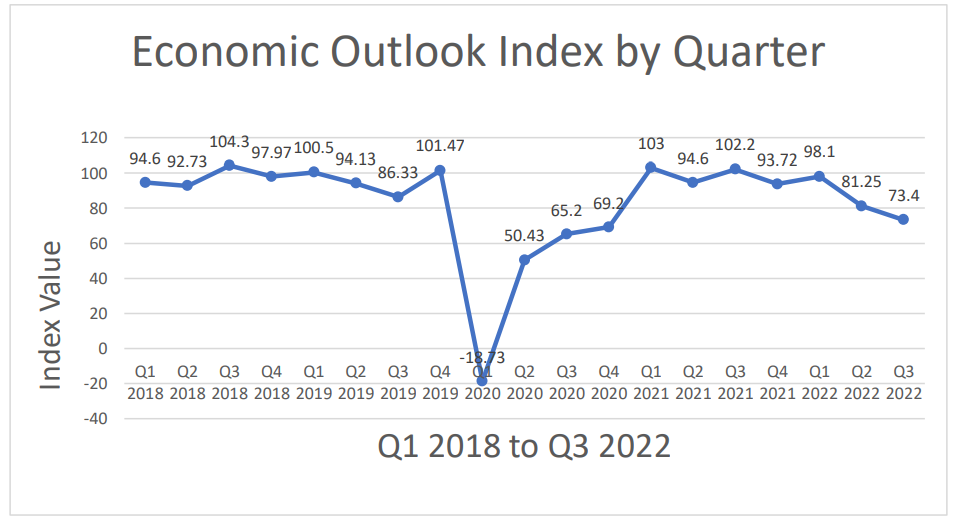
The latest quarterly CEO Economic Outlook Survey conducted by the University of Richmond’s Robins School of Business and the Virginia Council of CEOs reflects lowered expectations for the next six months. More than 80% of CEOs cited inflation and labor shortages as inhibitors to growth. Read the full report.
Fall Leaders Conference 2022: A Scaling Up Sell Out
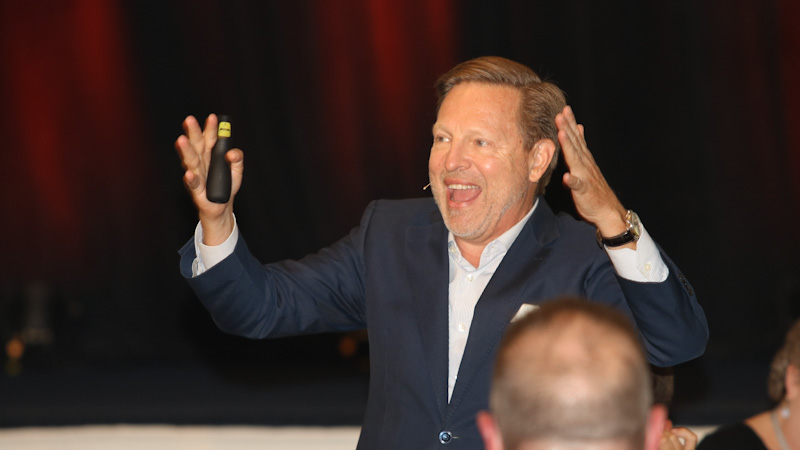
Most of the Virginia Council of CEOs’ events are for CEOs and sponsors only.
For this year’s Fall Leaders Conference we invited non-member CEOs and executive teams to engage with presenter Verne Harnish on the topic of “Scaling Up” your business. And we sold out the room at The Jefferson Hotel. There’s an appetite for growth!
Bringing my leadership team to this event was a game-changer. They were inspired by the concepts and are now thinking beyond their individual departments. This event established a common vocabulary and approach to scaling our business in the years ahead.
Chris Leone, WebStrategies Inc.
Verne spoke at a VACEOs luncheon in 2008 and we’ve been trying to get him back every since. A master story-teller, Verne connects the dots on trends, practices, models and techniques. He focused on the four key decisions every business must make in order to Scale Up: People, Strategy, Execution, and Cash.
We’ve already made plans for next year’s Fall Leaders Conference. It will be held on September 21, 2023 and will feature world famous sales coach Jack Daly. Save the date, tell your team, and get ready to “Get Jack’d”!
As a non-profit association, our sponsors provide expertise and resources that make events like this happen. Thanks to all of our them, and especially to those that backed this conference: Blue Ridge Bank, Fahrenheit Advisors, and Transact Capital Partners.
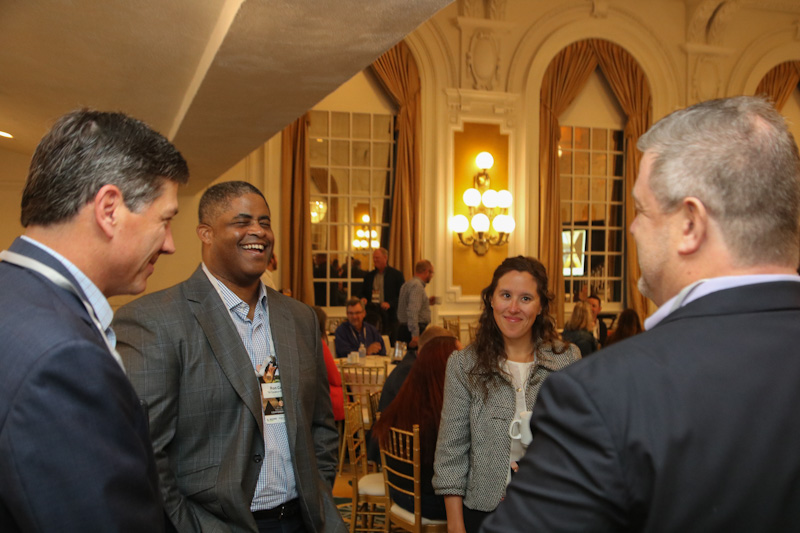

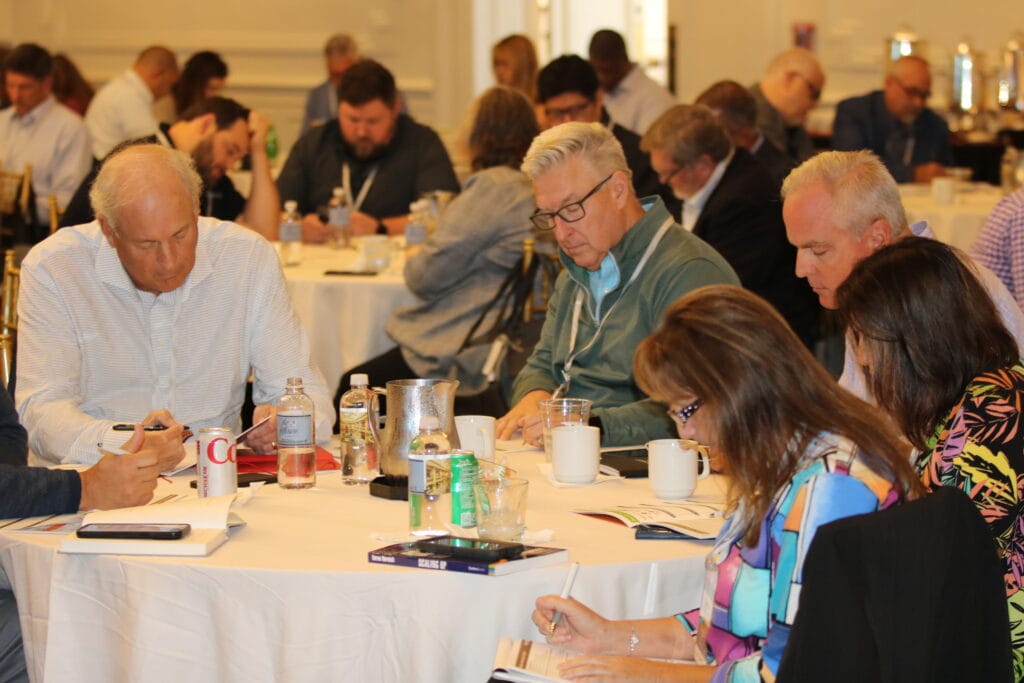
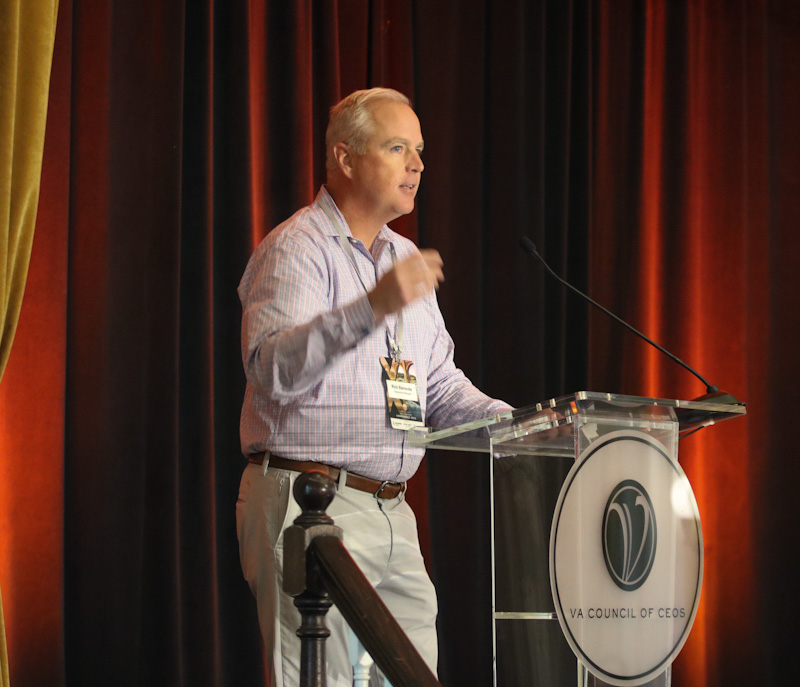
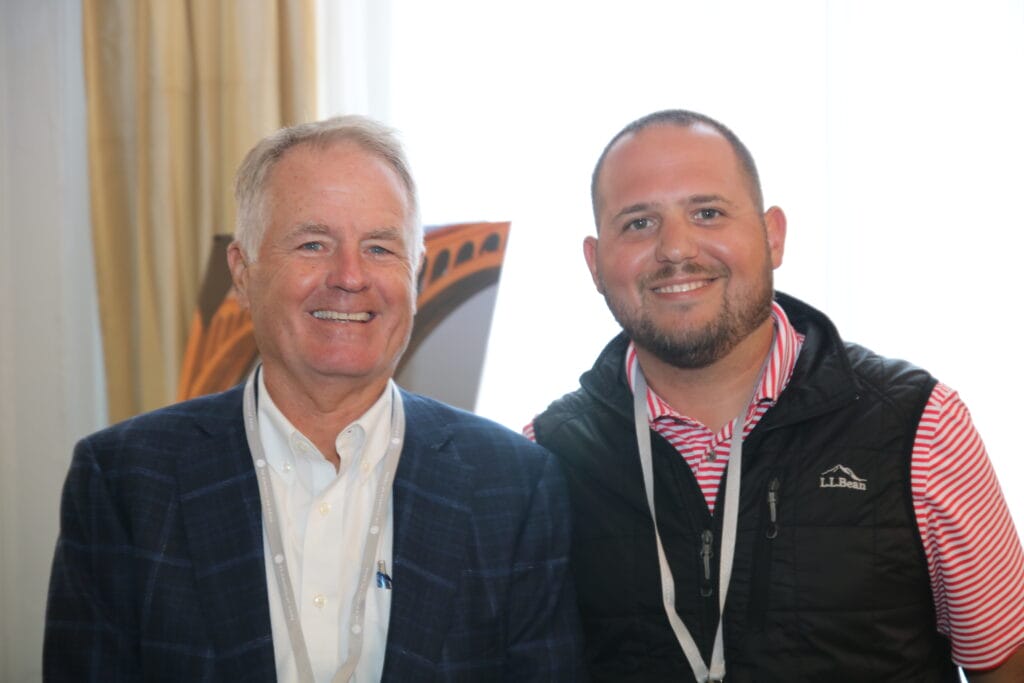
Corey Divine
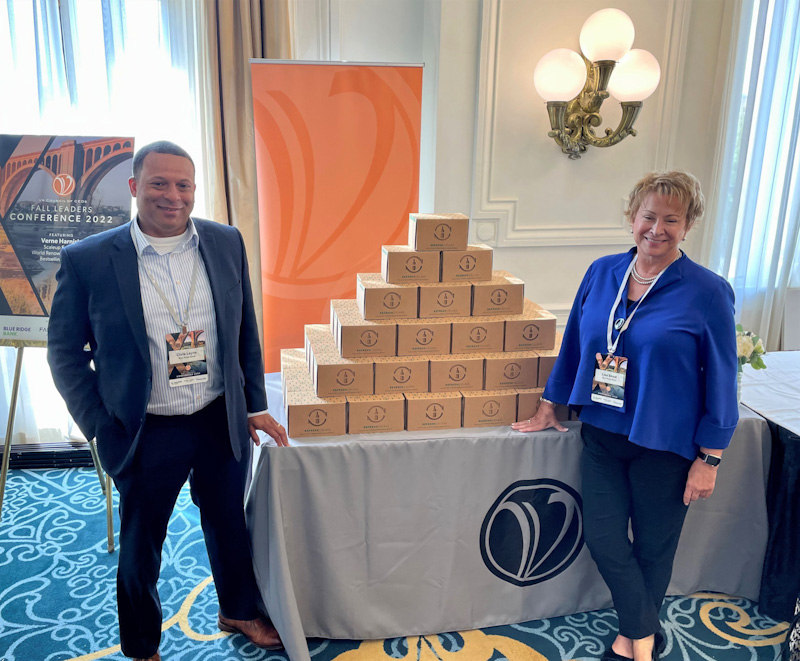
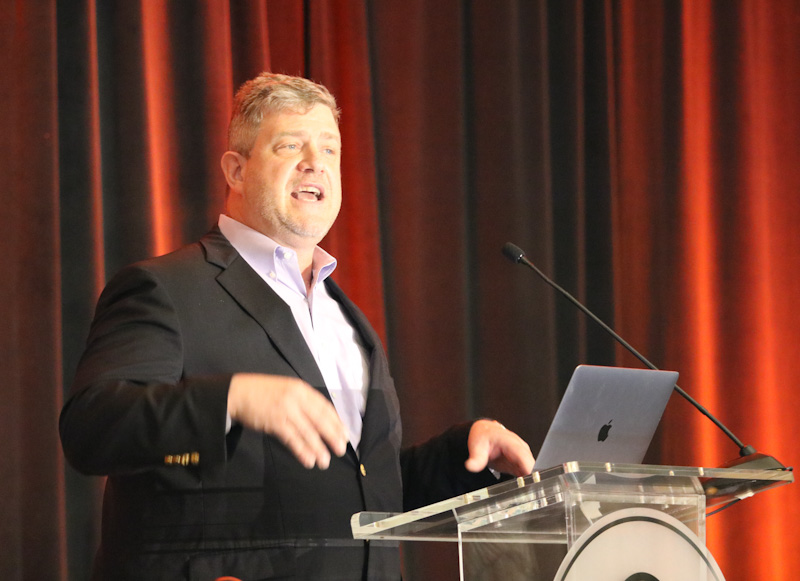
Announcing: Roundtable Program for Key Executives
For years, our members have been asking for a peer learning experience for their second in command. The VACEOs Board of Directors asked staff to create a peer learning experience for COOs, GMs, number twos, etc., as a pilot program for 2023.
Learning with peers accelerates the abilities of professionals. We know that from decades of serving CEOs in this way.
VACEOs is offering a cohort-style program for key executives from member companies that will:
- Create meaningful connections with other professionals. A trusted network.
- Accelerate the learning and growth of these professionals by expanding their perspectives and exposing them to others’ experiences.
- Connect them with experts from the community in a wide range of disciplines.
Beginning on January 20, 2023, a group of 8 to 10 executives will meet monthly through September. These three-hour meetings will be led by a professional facilitator and consist of two elements.
- A confidential peer roundtable experience that gives everyone the chance to share issues and opportunities, and to learn from one another’s experiences. Essentially, a “lite” version of our CEO Roundtables format.
- Learning from subject matter experts, drawn from VACEOs sponsors, on topics like strategy, execution, culture, technology, compliance, finance, HR, marketing, sales, etc.
This is not a VACEOs membership, but a program that we are offering to key executives in our members’ companies. Participants are expected to commit to 100% attendance.
As of October 31 we are no longer taking applications. If you have any questions, please email info@vaceos.org.
3 Ways to Tackle Inflation Challenges

Inflation is the Darth Vader of every business today. For more than a year, rising prices have caused rising concern for CEOs distressed about protecting their profitability. With inflation giving us an unwelcome throwback to the 1980s, it’s no wonder it keeps CEOs up at night.
Experts and pundits disagree on whether we’ve seen the peak and even about what’s on the horizon. In July inflation rose 8.5 percent from just a year ago — lower than expected. Though perhaps easing a bit, inflation pressures remain historically strong.
So what’s a CEO to do?
It’s important to focus on what you can control and take action where it makes sense for your business. Here are 3 ways to tackle inflation challenges: strategic planning, forecasting and scenario planning, and automation. To give you additional proven insights from your peers, three VACEOs members share their perspective:
• Michael Matthews, President & COO, Froehling & Robertson
• Jacob Blondin, President & CEO, Intrics
• Scott Crawford, President & CEO, Virginia 811
CEOs and business owners don’t have to take it on the chin with inflation. There are strategic ways to mitigate and minimize risk in this environment. In fact, there may even be new opportunities to take advantage of and strengthen your business — right now and into the future.
3 WAYS TO TACKLE INFLATION CHALLENGES
1. STRATEGIC PLANNING
Strategic planning empowers long-term thinking about where you want your business to be, the roadblocks in your way, and how to overcome those roadblocks. It’s your roadmap for where you’re headed and how to get there. Especially in times of uncertainty it’s critical to reexamine your strategic plan to determine whether its assumptions are still valid, whether some initiatives should be put on hold, and whether there are new opportunities to explore.
The best way to hedge if you’re not in an inflation-shielded market is to establish yourself as an invaluable partner to your clients. You don’t want to be a fringe player right now. If your client is dropping partners, you want to be the last one standing.
Mike Matthews, Froehling & Robertson
“Strategic planning is all about establishing your unique value in the market, and the benefit is determining what value you’re providing and who your best clients really are,” he says. “In this environment, you should be focusing on those best clients and those areas in which you have the highest profit margins. You want to be the partner your best clients can’t live without.
“Ideally strategic planning is an ongoing process, not just something you do when you’re in trouble. If you’re also focused on strategic planning when you’re at the top of your game, you can determine how to stand on that going forward,” he says. “Harvard economic and strategy expert Michael E. Porter says the essence of strategy is figuring out what not to do. It’s critical to not lose focus on your value in times of crisis — don’t act out of desperation. You can’t be all things to all people, so be selective and stay true to your unique value.”
2. FORECASTING AND SCENARIO PLANNING
Forecasting and scenario planning isn’t a crystal ball, but it will help you plan for a range of what-ifs — and right now there’s no shortage of what-ifs. Model future business scenarios and forecast possible outcomes so you’ll have the insight for better decision-making if and when those scenarios become real.
“The best thing to do right now is to be decisive, be aggressive with decision-making to manage costs,” says Blondin, adding that the lesson comes from his own past business experiences. “Don’t hold on too long in a downturn with the expectation things will change.
Leverage forecasting and scenario planning to anticipate future costs and make sure you’re structuring your revenue smartly. Don’t overspend. Don’t over hire. And be cautious with your investments.
Jacob Blondin, Intrics
“Learn from what we all just went through with COVID and apply the same strategies and the same mentality. But there’s a difference. With COVID, businesses had the safety net of government support. In a downturn, we won’t have that luxury — and the cards will fall where they may.
“Utilize forecasting and trending by experts — for example, with fuel prices — and pass on the costs of the core drivers of your business to your customers,” he says. “We restructured our revenue to control for inflation by passing on the costs of our core drivers, labor and fuel. When our costs go up, our customers’ costs go up. Our customers also understand when our costs go down, their costs go down. It was the largest shift we’ve ever made in our business design, and it’s a vastly more complex revenue model, which also includes localized pricing in micro markets. For business owners, now is an opportune time to do this because your customers are seeing and doing the same thing — awareness is high, and so is the feeling that we’re all in this together.”
3. AUTOMATION
In challenging economic times, businesses can’t afford mistakes. Automating accounting, sales, HR, and other processes minimizes errors and creates new efficiencies. It frees your team to tackle higher-value work. And it’s both affordable and attainable — with off-the-shelf as well as custom solutions.
“In my business, we can’t allow one ticket to have an error — it could result in loss of life, loss of property, or interruption of services people depend on,” says Crawford, whose company is responsible for alerting underground utility operators of excavation possibly affecting facilities so they can be marked. “Having the human resources to audit more than a million tickets a year would be insurmountable. We got a grant to work with Virginia Tech’s Statistical Applications and Innovations Group to develop an AI model to allow us to audit Web Ticket Entry tickets at 100 percent. If a ticket meets the threshold for a probability for error, then it’s directed to a human. Upon full implementation, we will have confidence that every ticket is being reviewed. And we created a new QA and QC department to focus on matters relating to possible errors.
“The benefits of automated processes are phenomenal. In a sense, AI is another team member. Humans work with AI to enhance what they’re doing. It’s not a replacement of the workforce,” he says. “Generally speaking, increasing the use of technology in business will bring cost savings, but people are afraid of the idea of lost jobs. There is some job loss due to attrition, but technology is actually creating new jobs to fill, just as ours did. We moved people to our new QA and QC department, which offers higher-level, higher-paying jobs. We’re also now working to apply machine learning to our AI model to become even more accurate in what it predicts.”
Companies not leveraging technology the best they can ultimately risk not being relevant to the needs of the market. They’ll be behind the curve — and they won’t be able to catch up. Companies afraid of change need to be more afraid of going out of business.
Scott Crawford, Virginia 811
WRAPPING UP
Rising inflation can put unprepared businesses on the backfoot. Strategic planning, forecasting and scenario planning, and automation are three ways to tackle inflation challenges efficiently, effectively — and confidently. As a bonus, they’ll also put businesses in position to grow faster when more normal economic dynamics return.
About the Author
Mark Vita is managing director at Fahrenheit Advisors. He leads the firm’s Business Advisory and Finance & Accounting practices. Contact him at mvita@fahrenheitadvisors.com.
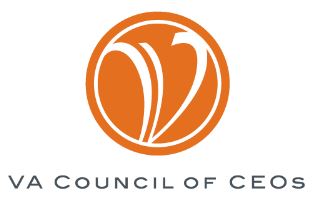
Recent Comments